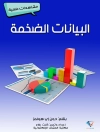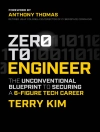In March2005about40scientistsfrom Europe, Japanandthe UScametogether the second time to discuss ways to achieve sustained performance on superc- puters in the range of Tera?ops. The workshop held at the High Performance Computing Center Stuttgart (HLRS) was the second of this kind. The ?rst one had been held in May 2004. At both workshops hardware and software issues were presented and applications were discussed that have the potential to scale and achieve a very high level of sustained performance. The workshops are part of a collaboration formed to bring to life a concept that was developed in 2000 at HLRS and called the “Tera?op Workbench”. The purpose of the collaboration into which HLRS and NEC entered in 2004 was to turn this concept into a real tool for scientists and engineers. Two main goals were set out by both partners: • To show for a variety of applications from di?erent ?elds that a sustained level of performance in the range of several Tera?ops is possible. • To show that di?erent platforms (vector based systems, cluster systems) can be coupled to create a hybrid supercomputer system from which applications can harness an even higher level of sustained performance.
Mục lục
Future Architectures in Supercomputing.- The NEC SX-8 Vector Supercomputer System.- Have the Vectors the Continuing Ability to Parry the Attack of the Killer Micros?.- Performance and Applications on Vector Systems.- Performance Evaluation of Lattice-Boltzmann Magnetohydrodynamics Simulations on Modern Parallel Vector Systems.- Over 10 TFLOPS Computation for a Huge Sparse Eigensolver on the Earth Simulator.- First-Principles Simulation on Femtosecond Dynamics in Condensed Matters Within TDDFT-MD Approach.- Numerical Simulation of Transition and Turbulence in Wall-Bounded Shear Flow.- Finite Element Method.- Computational Efficiency of Parallel Unstructured Finite Element Simulations.- The Role of Supercomputing in Industrial Combustion Modeling.- Fluid Dynamics.- Simulation of the Unsteady Flow Field Around a Complete Helicopter with a Structured RANS Solver.- A Hybrid LES/CAA Method for Aeroacoustic Applications.- Simulation of Vortex Instabilities in Turbomachinery.- Particle Methods.- Atomistic Simulations on Scalar and Vector Computers.- Molecular Simulation of Fluids with Short Range Potentials.- Toward TFlop Simulations of Supernovae.- Turbulence Simulation.- Statistics and Intermittency of Developed Channel Flows: a Grand Challenge in Turbulence Modeling and Simulation.- Direct Numerical Simulation of Shear Flow Phenomena on Parallel Vector Computers.












